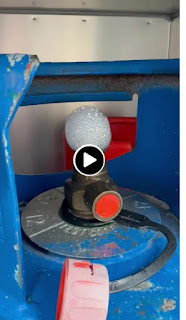I often guide people on the safe and proper way to open cylinder seals. Whether it's for accessing propane, butane, or other gases stored within, knowing the correct and safety way is very important.
Before you start, just make sure you're in a well-ventilated area with no open flames or sparks nearby. Safety should always come first. Check the gad cylinder for any signs of damage or leaks. If you notice any dents, rust, or hissing sounds indicating a leak, do not proceed and ask for a replacement immediately.
Next is to place the gas cylinder on a stable and flat surface, making it won't tip over during the process. Then locate the seal. Look for the seal on the cylinder valve. It's usually a plastic or metal cap covering the valve to prevent tampering and ensure the gas remains secure.
Once you locate the seal, depending on the type of seal, you may need to use a tool like pliers or a wrench to grip and twist it off. Alternatively, some seals can be removed by hand. Follow the instructions provided by the gas supplier if available.
Once the seal is removed, set it aside in a safe place. Some seals are reusable, while others may need to be disposed of properly. With the seal removed, you can now open the cylinder valve. Turn the valve counterclockwise slowly and steadily to release the gas. Be gentle to avoid sudden releases of pressure.
So, this seems easy until there is a leakage. Always take caution when handling LPG gas. As you open the valve, be mindful of any hissing sounds or strong odors indicating a gas leak. If you suspect a leak, close the valve immediately and follow proper safety procedures. Close the valve when finished, once you've used the desired amount of gas, by turning it clockwise until it's tightly closed. This prevents any gas from escaping and ensures the cylinder remains secure.
But remember, If you're not using all the gas at once, consider replacing the seal on the valve to keep it secure until next use. Follow the same procedure as before to ensure it's properly sealed.
READ MORE: How To Remove Seal Of Gas Cylinder Safely Without Tools At Home


